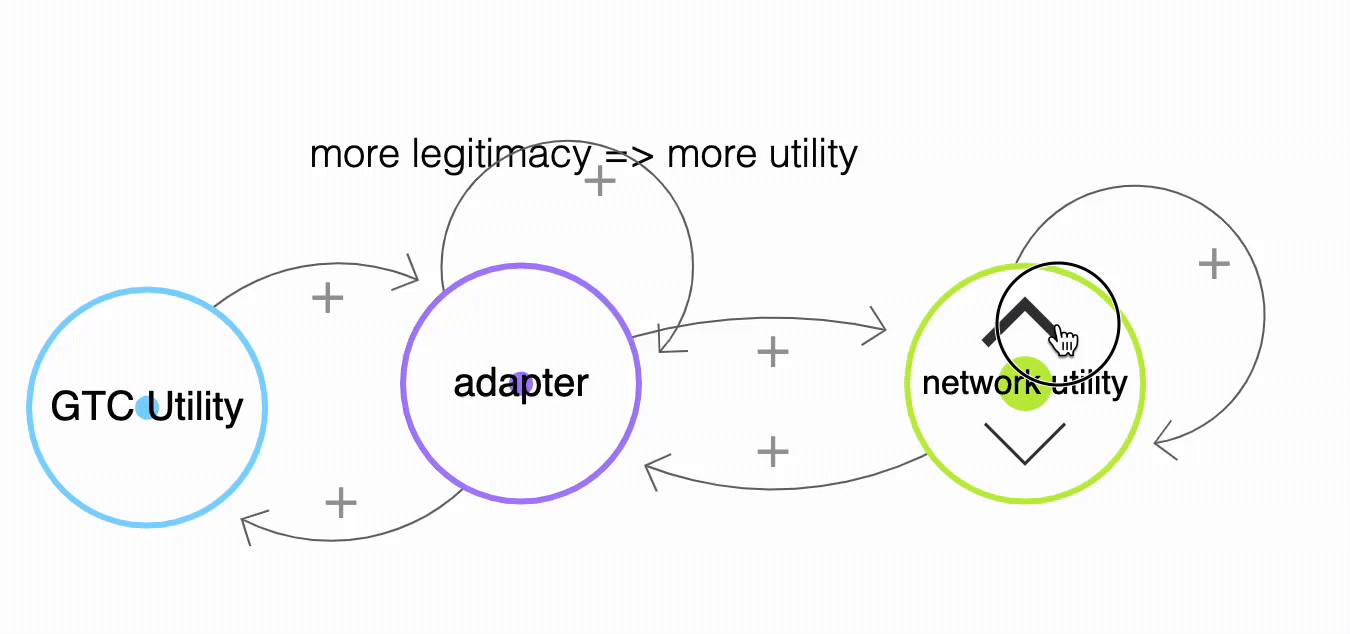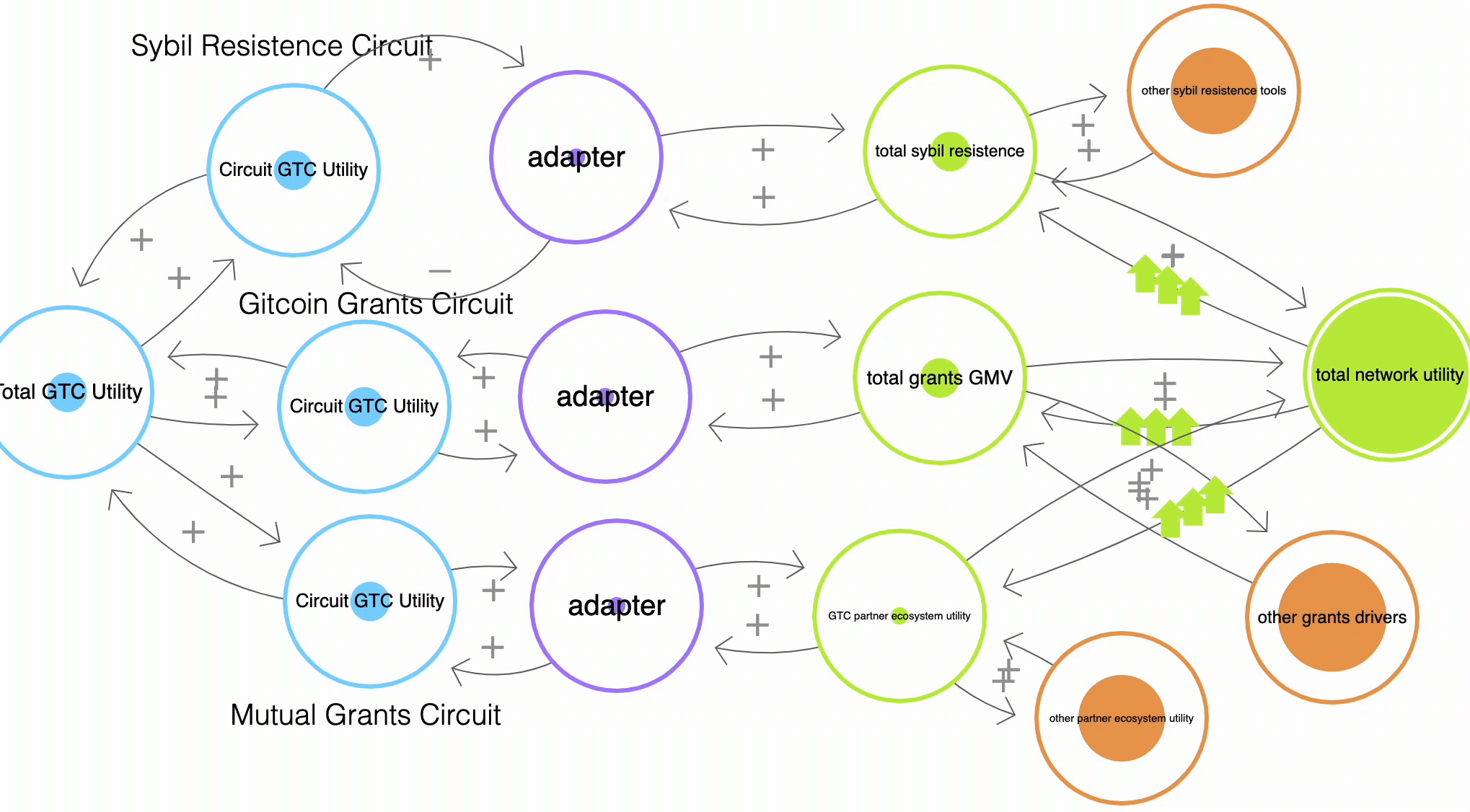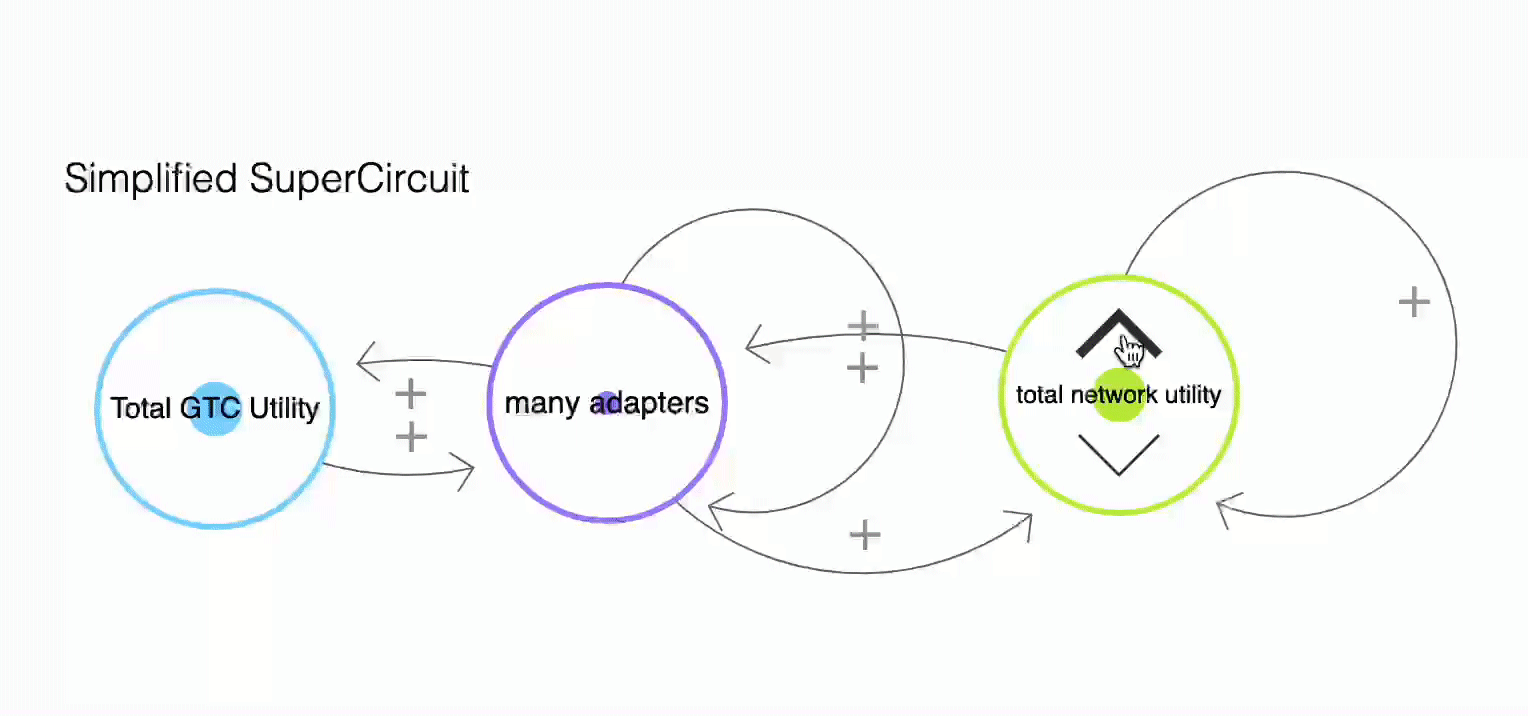In this post, I would like to articulate the way I think about the DAO building Network Utility. I will not prescribe any particular mechanism, but I will try to build a vocabulary for thinking about these mechanisms.
By having visuals and by sharing a common vocabulary + a modular, composable, scalable way of thinking about network Utility, the DAO will have less of a coordination lift to build network utility + network Utility.
Post TLDR
- Circuits are a composable way of connecting governance Utility to Network Utility in a positive sum way
- Adapters are the primary mechanism within a circuit.
- Circuits & Adaptors can be stacked modularly.
- The remainder of the post explores stacking circuits in practice.
Circuits
Per https://gitcoin.co/results we know that Gitcoin delivers $6m/quarter in financial network value & a ton of social value too to the ecosystem.
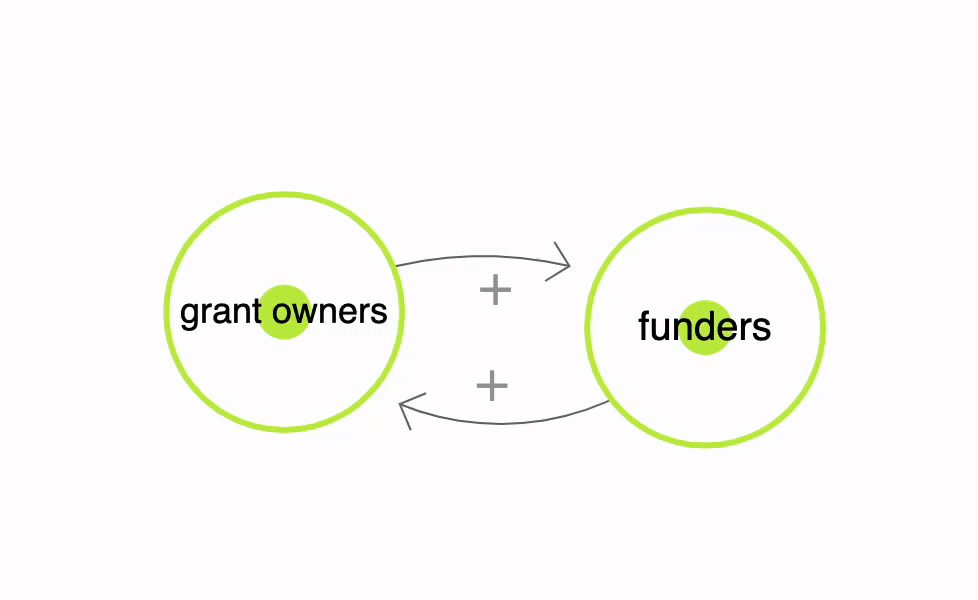
Because Gitcoin is a double sided marketplace (grant owners <> funders), The Network Effects of GitcoinDAO's Protocols 📈 (in theory) create an exponential growth in the network utility for both sides of the marketplace.
For the purposes of simplicity in this post, I will abstract this double sided marketplace into one node:
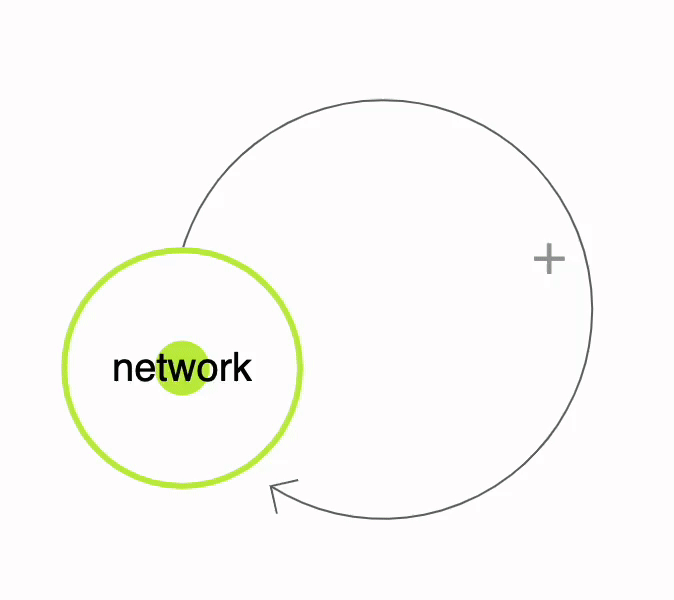
This post will articulate how the DAO might build a circuit that, when combined with an adapter, could create both more network utility and governanceUtility
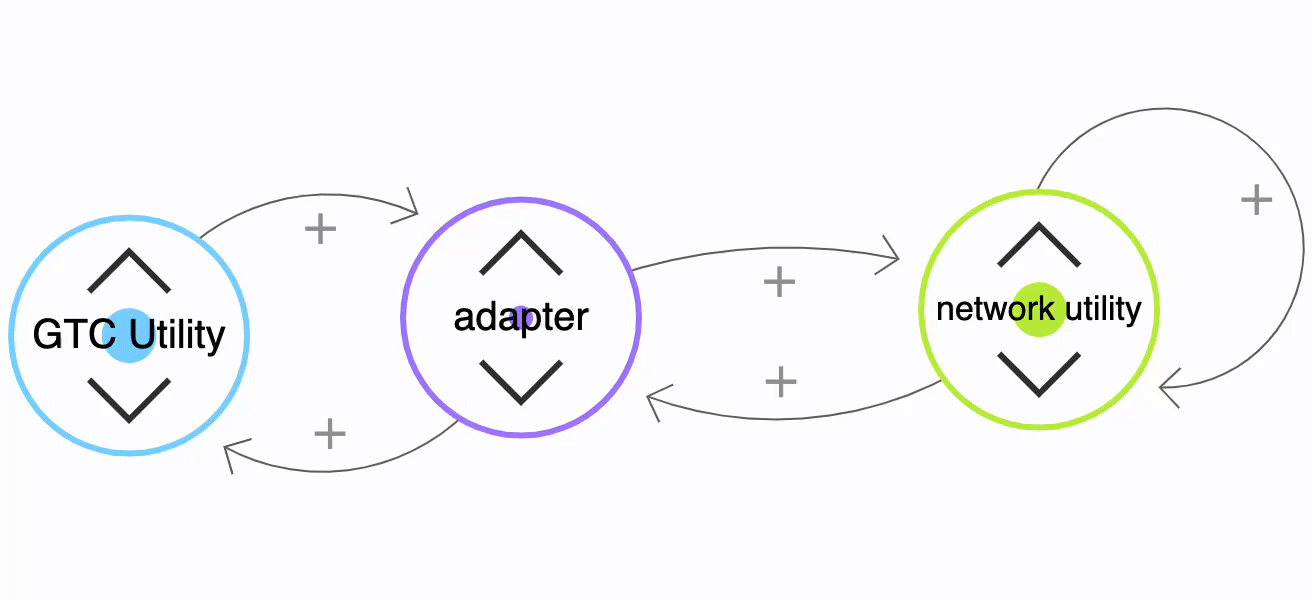
An adapter is a credibly neutral mechanism that connects the network (which is already creating utility for the ecosystem but has governance problems) to GTC governance token (which is held by people who have the context to govern Gitcoin, but has no utility).
In this circuit, the adapter exports governance to the parts of the circuit that needs governance, and utility to the part of the circuit that needs utility.
- GTC governance tokens have little utility + a lot of ability to govern.
- The network has a lot of utility + lots of governance problems
- An adapter bridges the two, creating more utility for governance (reducing governance problems) + also more utility. At least in theory!
More legitimacy - the first bonus feature
It gets better. Since the network utility is now being governed better according to the preferences of its users (who bc of the retro airdrop have GTC), the end result is more legitimacy, which creates more utility. The whole thing is even more positive sum.
Modularity - the second bonus feature
Know what else is cool about these circuits? They can stack on top of each other fairly modularly!
Lets stack some circuits! Heres what that could look like:
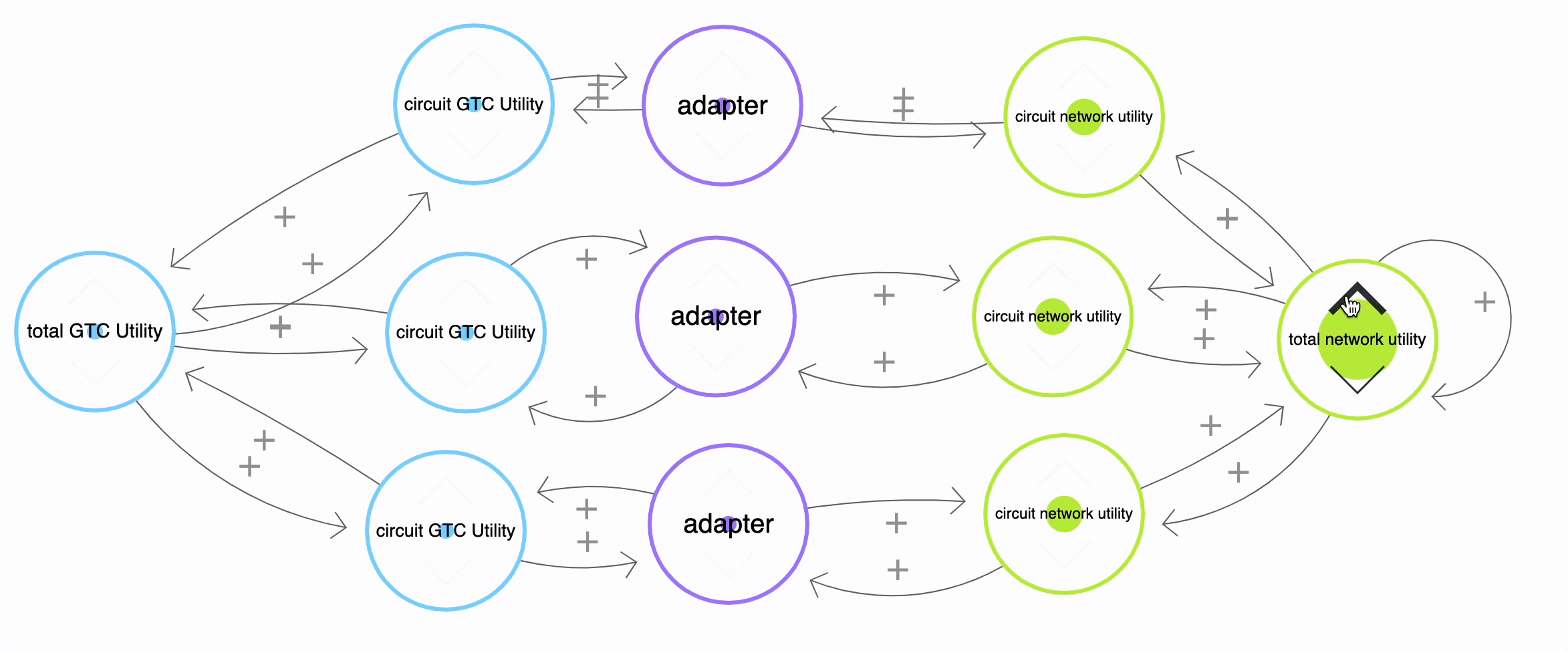
An aside: @kyle has sent me a great post about how NOT to do this here. Any such adapters should likely innovate so they are positive sum (past DAO staking tools have not really done this well)
Weee ! Bitcoiners stack sats. At Gitcoin, we stack circuits
Stacking Circuits in Practice
Example 1 - Passport GTC Staking
One idea I’ve seen kicked around the DAO is the idea to add more total sybil resistance into the Gitcoin ecosystem + web3 ecosystem with Gitcoin passport by adding more stamps to the system. The post Passport is our AWS goes into this idea in depth.
One thing that could be done is to build an circuit that creates sybil resistance (network utility) with GTC. Imagine an adapater is built that allows people to stake on each others identities to increase the sybil resistence of each user staked. So for example,
- I know @kyle is a real human, so I take $300 worth of GTC on him. If his Gitcoin Passport ID had a cost of forgery of $50 before, he now has a $350 cost of forgery.
- I know @linda is a real human, so I take $1000 worth of GTC on her. If her Gitcoin Passport ID had a cost of forgery of $337 before, she now has a $1337 cost of forgery.
- and so on.
Heres what I think this looks like:
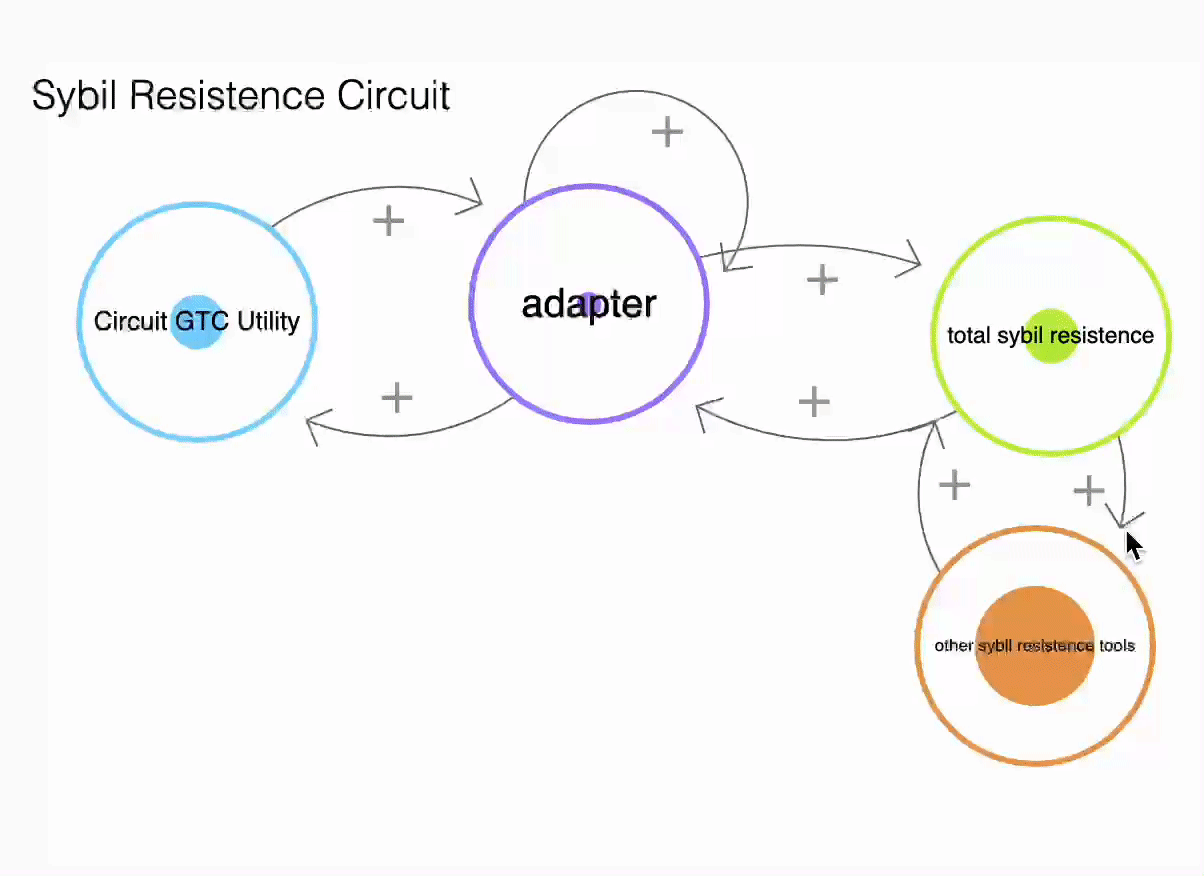
Example 2 - Conviction Voting GTC Staking
Here’s a circuit that is already built! A GTC conviction voting app!
It consists of an adapter hosted at voting.gitcoin.co where anyone can go in and stake their GTC on which grants they think are higher quality than other grants. This provides fairer starting conditions to the Gitcoin Grants rounds, so it does not become a horse race (where ppl get more contributions => higher matching => repeat)
Heres what I think this circuit looks like:
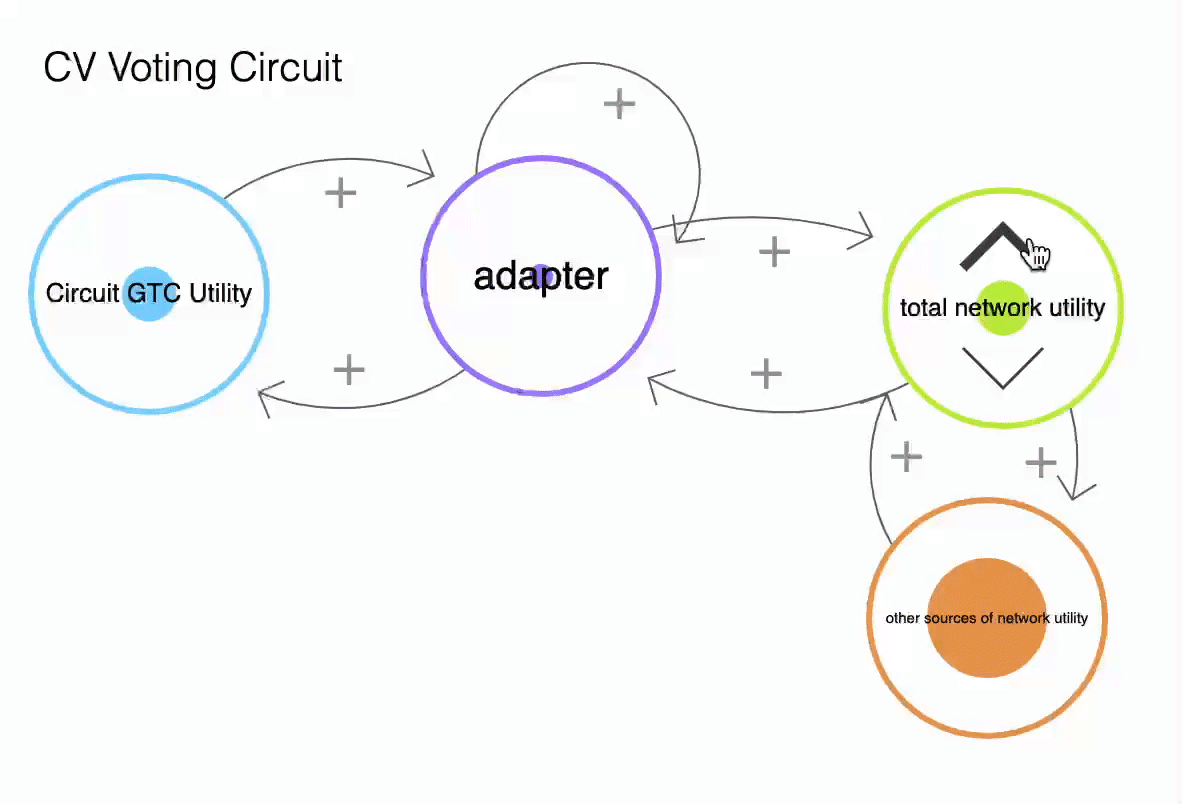
Example 3 - Mutual Grants
One thing that I think is fairly upside for Gitcoin could be Mutual Grants - which again, are already happening.
Mutual Grants allow Gitcoin to invite our partner ecosystems to participate in Gitcoin governance, which increases Gitcoin governance utility.
The same could be true in reverse (Gitcoin creating partner ecosystem utility).
For more on this idea, checkout updates from @ceresstation on this thread: Constructing a Mutual Grants Committee
Heres what I think this circuit looks like:
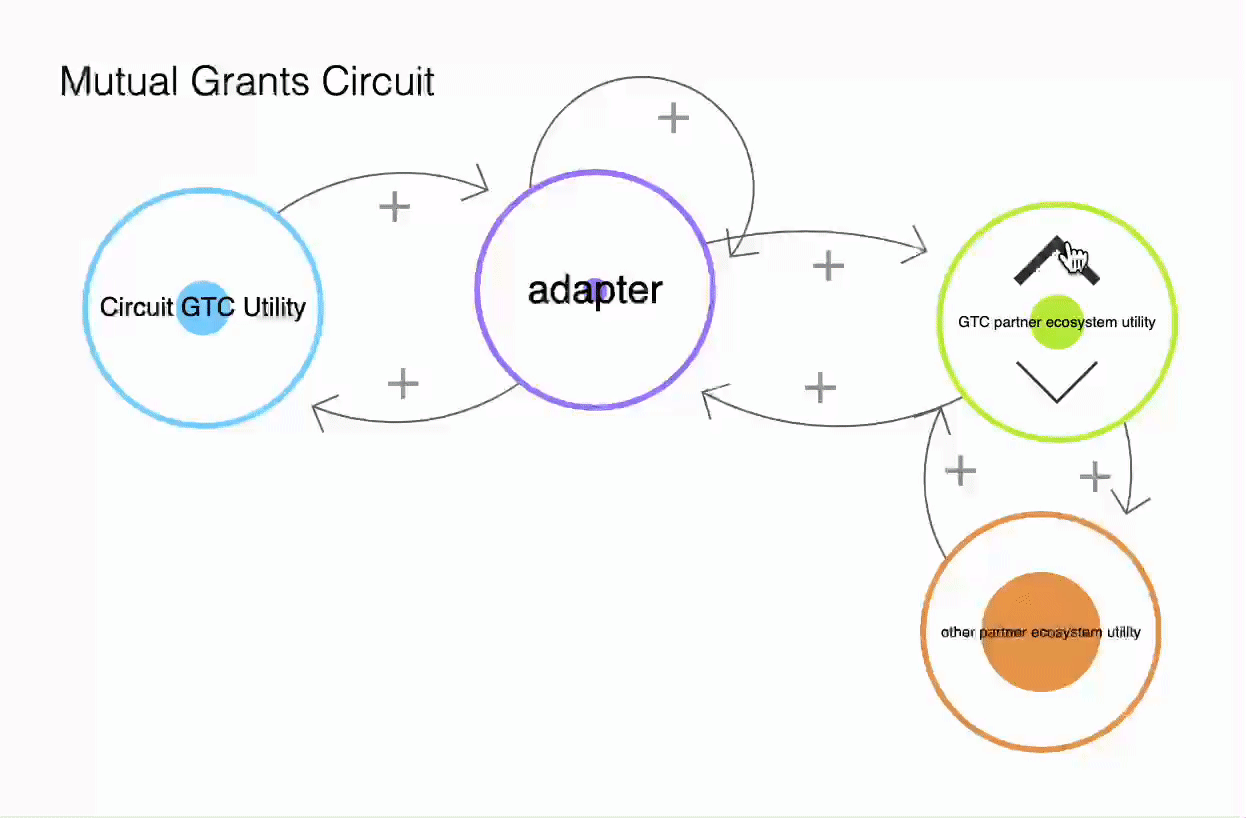
Stacking Circuits = SuperCircuit!
Here is a stacked circuit of these 3 circuits.
Notice how once the circuits are setup correctlly (positive sum) utility flows around the supercircuit like water flowing downhill.
Now that we’ve looked at the expanded version of this circuit, we could perhaps simplify.
This stack of circuits could be further simplified by looking at the circuits from the to down as opposed to stacked next to each other. eg as follows:
For those skilled at reading between the lines, the total Utility is bounded by
- total network utility
- how much of that utility is translated into governance utility by adapters.
Feedback welcome.
